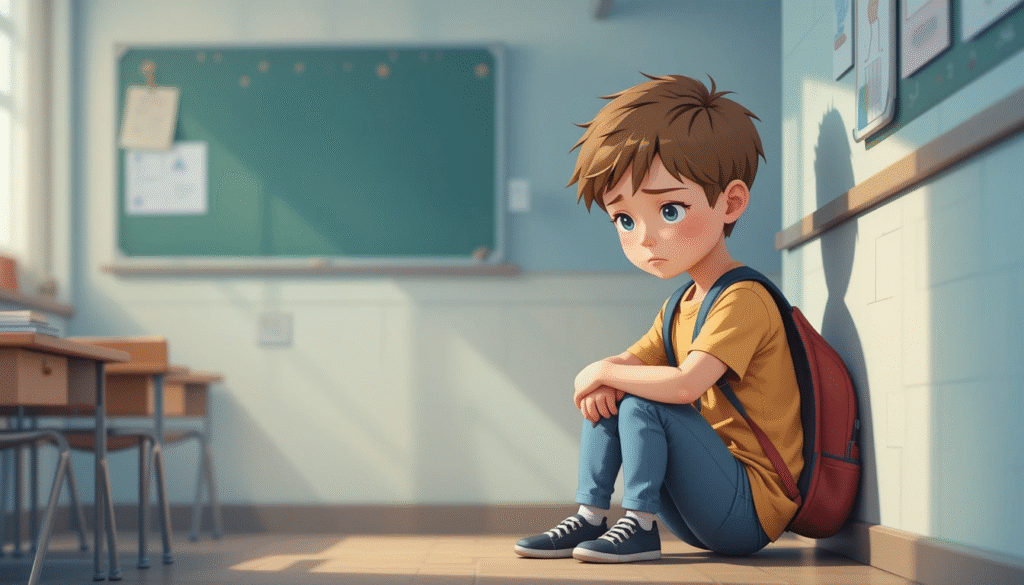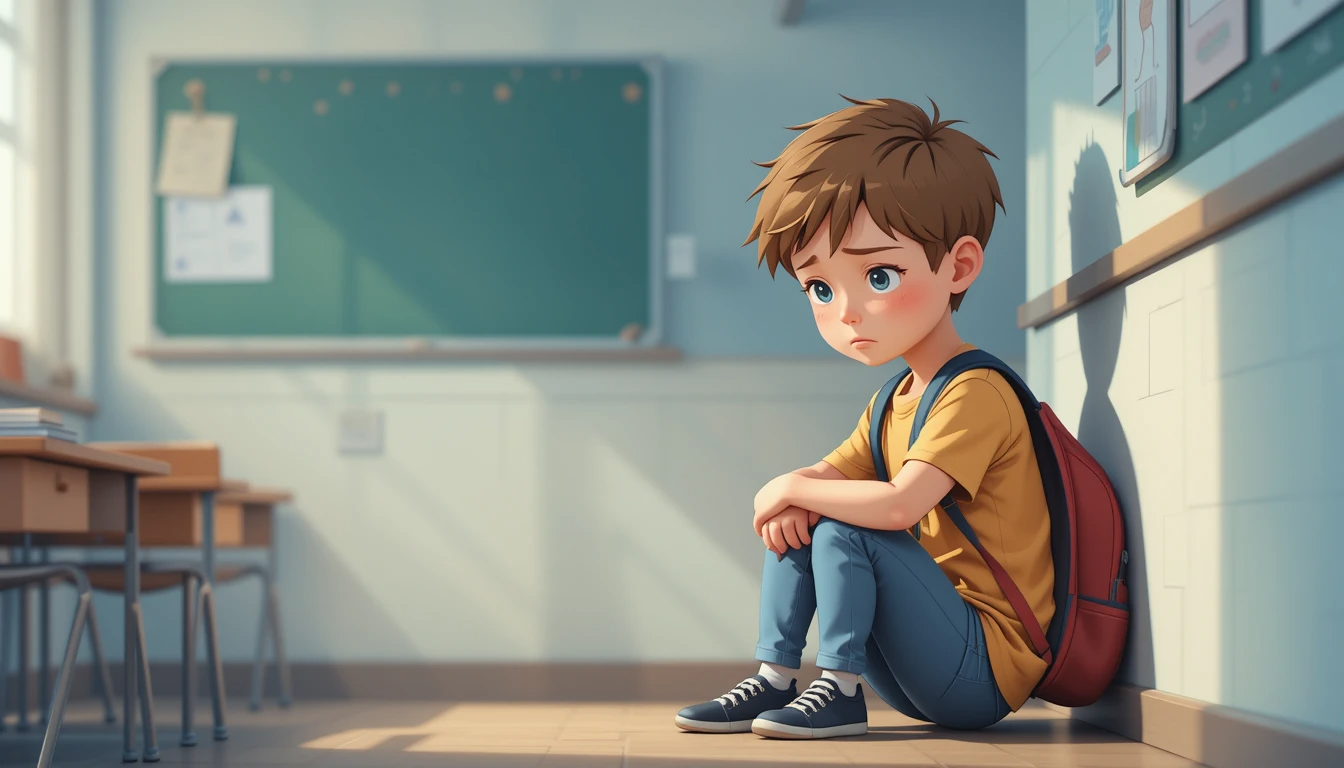Childhood is often thought of as a carefree period of life, filled with play, learning, and emotional growth. However, many parents and caregivers overlook the fact that children can suffer from anxiety — a condition that affects how they think, feel, and behave. Recognizing the signs of anxiety in children is essential to ensuring early intervention and emotional well-being.
According to the Centers for Disease Control and Prevention (CDC), approximately 9.4% of children aged 3–17 have diagnosed anxiety. But even more children may experience undiagnosed or situational anxiety. So how can we tell if a child is dealing with more than just normal worries?

What Is Childhood Anxiety?
Before diving into specific signs, it’s important to understand what anxiety is in the context of childhood.
Anxiety is a natural response to perceived threats, characterized by worry, nervousness, or fear. In children, anxiety can be triggered by a wide range of situations — from school pressure and social expectations to family disruptions or trauma.
Occasional worries are normal, but persistent, intense, or irrational fear that interferes with daily functioning may indicate an anxiety disorder.
Common Types of Anxiety Disorders in Children
Understanding the types of anxiety disorders can help you better interpret their symptoms.
1. Generalized Anxiety Disorder (GAD)
Children with GAD worry excessively about various aspects of daily life such as school, health, or family.
2. Separation Anxiety Disorder
This is especially common in younger children who experience intense fear about being away from parents or caregivers.
3. Social Anxiety Disorder
Involves extreme fear of being judged or embarrassed in social settings.
4. Specific Phobias
Intense fear of a particular object or situation, such as dogs, heights, or the dark.
5. Panic Disorder
Characterized by sudden episodes of intense fear accompanied by physical symptoms like rapid heartbeat, sweating, or dizziness.
Early Signs of Anxiety in Children
Spotting the early signs of anxiety in children can be tricky, as symptoms may resemble other behavioral issues or typical developmental phases.
1. Physical Complaints
Children with anxiety often report unexplained physical issues such as:
- Stomachaches
- Headaches
- Fatigue
- Muscle tension
These symptoms may not have a medical cause and often worsen before school or stressful events.
2. Sleep Problems
Anxious children may have difficulty falling or staying asleep. They may resist bedtime, complain about nightmares, or wake up frequently during the night.
3. Avoidance Behavior
One of the clearest signs of anxiety in children is avoidance:
- Avoiding school
- Refusing to attend social gatherings
- Avoiding specific people or locations
- Clinging to parents in unfamiliar settings
4. Constant Worry or Fear
Even at a young age, children may vocalize fears about disasters, health issues, or imagined scenarios. They may ask repetitive questions seeking reassurance.
5. Irritability and Tantrums
Anxiety may manifest as emotional outbursts or irritability, especially in children who can’t articulate their worries. Frequent meltdowns or an exaggerated response to minor issues could be anxiety-related.
6. Perfectionism
Children with anxiety might exhibit obsessive behaviors like erasing homework repeatedly or avoiding assignments they think they can’t do perfectly.
Signs of Anxiety in Children at Different Ages
The signs of anxiety vary across age groups. Here’s what to look for:
Preschoolers
- Extreme clinginess
- Trouble sleeping alone
- Fear of strangers or monsters
- Frequent crying or tantrums
Elementary School Children
- School refusal
- Trouble concentrating
- Constant worry about tests or friendships
- Physical complaints without cause
Teenagers
- Withdrawal from friends or family
- Decline in school performance
- Substance use (in severe cases)
- Excessive use of digital devices to escape
When Is It Time to Seek Help?
It’s not always easy to distinguish between normal stress and an anxiety disorder. The general rule of thumb is: if anxiety interferes with your child’s ability to function at school, at home, or socially, it’s time to seek professional support.
The American Academy of Child and Adolescent Psychiatry recommends talking to a pediatrician or mental health provider if:
- Anxiety persists for more than a few weeks
- Your child avoids activities they once enjoyed
- Symptoms are worsening over time
What Causes Anxiety in Children?
There is no single cause of anxiety, but several factors contribute:
1. Genetics
Children with a family history of anxiety or depression are more likely to develop symptoms themselves.
2. Brain Chemistry
Imbalances in neurotransmitters like serotonin and dopamine may affect emotional regulation.
3. Environment
Stressful life events such as divorce, bullying, or a traumatic event can trigger anxiety.
4. Parenting Style
Overprotective or overly critical parenting may increase anxiety risk, although this is not always the case.
How to Support a Child with Anxiety
Once you’ve identified the signs of anxiety in your child, the next step is support and intervention. Here are some evidence-based strategies:
1. Open Communication
Let your child express their fears without judgment. Use phrases like:
- “I can see that you’re worried — want to talk about it?”
- “It’s okay to feel nervous sometimes.”
2. Validate, Don’t Dismiss
Avoid saying “You’re fine” or “There’s nothing to worry about.” Instead, acknowledge their feelings and help them manage them constructively.
3. Establish Routines
Predictable schedules help reduce anxiety. Stick to consistent meal times, bedtimes, and study hours.
4. Teach Coping Skills
Introduce breathing exercises, journaling, or mindfulness techniques like Headspace for Kids.
5. Gradual Exposure
If your child is avoiding situations, help them face their fears gradually and safely — for example, starting with short social interactions and building from there.
Professional Treatments for Childhood Anxiety
If anxiety significantly affects your child’s quality of life, professional treatment may be needed.
1. Cognitive Behavioral Therapy (CBT)
CBT is considered the most effective therapy for childhood anxiety. It helps children identify and challenge anxious thoughts and replace them with healthier ones.
2. Medication
In some cases, doctors may prescribe SSRIs (Selective Serotonin Reuptake Inhibitors). This is usually for moderate to severe anxiety and is always combined with therapy.
3. Parent Training Programs
Therapists may also guide parents on how to reinforce positive behaviors and reduce anxiety triggers at home.
For more details, the National Institute of Mental Health (NIMH) provides excellent guidance on childhood mental health.
Supporting Children in School Settings
Teachers and school counselors play a crucial role in identifying and helping anxious children. If your child is struggling at school:
- Communicate with teachers about your concerns.
- Develop an Individualized Education Plan (IEP) or 504 Plan, if necessary.
- Allow for accommodations like extra time on tests or access to a quiet room.
Many schools now implement Social and Emotional Learning (SEL) programs to help children manage their emotions. Learn more at CASEL.
What NOT to Do When a Child Is Anxious
Well-meaning parents sometimes unintentionally make things worse. Avoid these common mistakes:
- Over-reassuring: This reinforces the idea that there is something to fear.
- Avoiding triggers: While short-term avoidance may reduce stress, it can worsen anxiety long-term.
- Punishing anxiety symptoms: Anxiety is not a behavior problem. Tantrums or refusals often stem from genuine fear.
Long-Term Outlook: Can Children Outgrow Anxiety?
Many children outgrow mild anxiety as they mature. However, untreated anxiety can persist into adolescence and adulthood, increasing the risk of depression, substance abuse, or academic problems.
The key to a better outcome is early identification, consistent support, and appropriate treatment.
Conclusion: Be Your Child’s Emotional Anchor
Spotting the signs of anxiety in children is the first and most crucial step in providing support. With increased awareness, open dialogue, and professional help when needed, children can learn to manage anxiety and thrive emotionally, socially, and academically.
By staying informed and proactive, parents, caregivers, and educators can create a nurturing environment where children feel safe, understood, and empowered to overcome their fears.
Additional Resources
- Child Mind Institute – Comprehensive mental health support for children.
- Anxiety & Depression Association of America – Resources for understanding and managing anxiety.
- CDC on Children’s Mental Health
